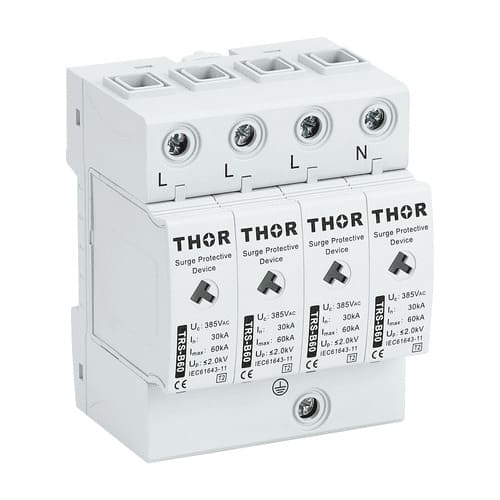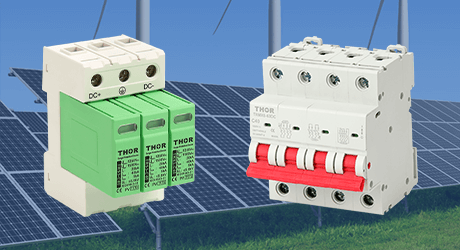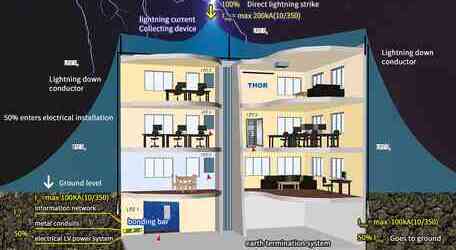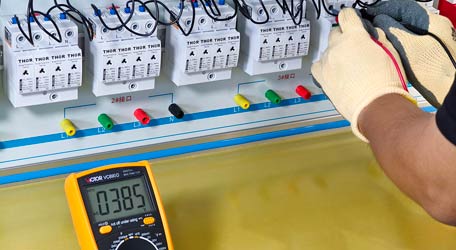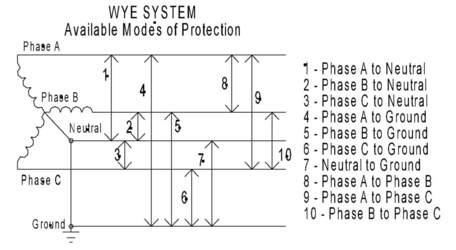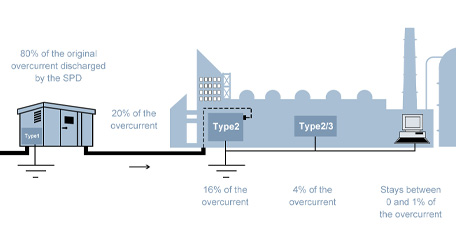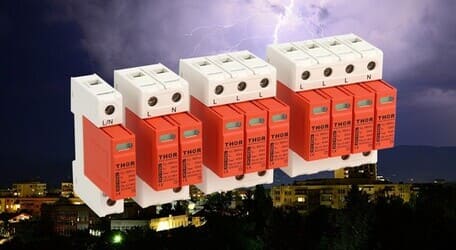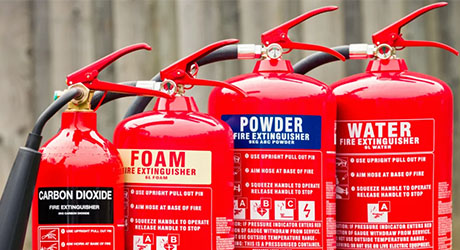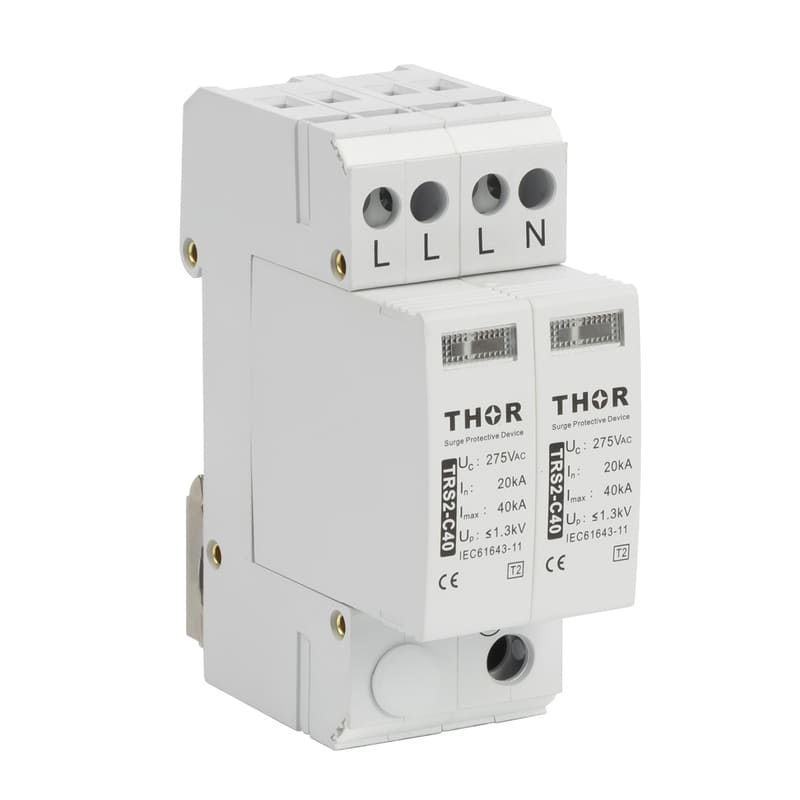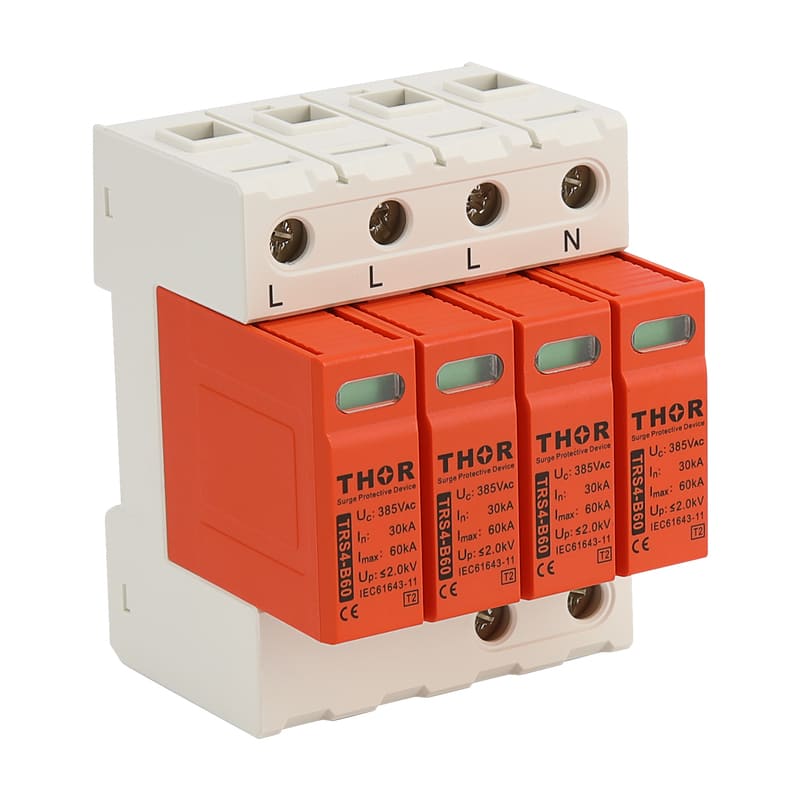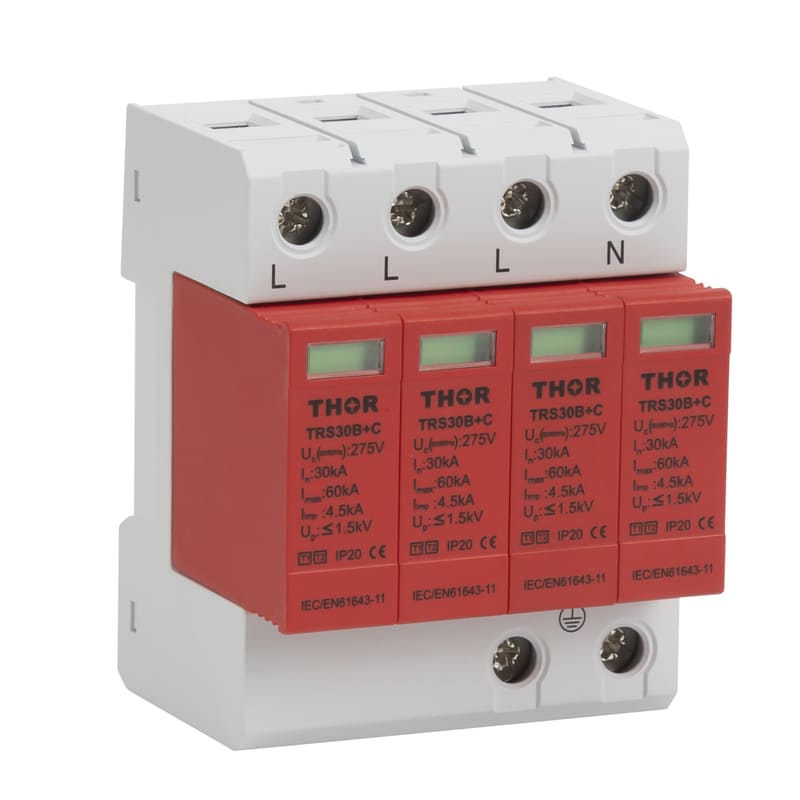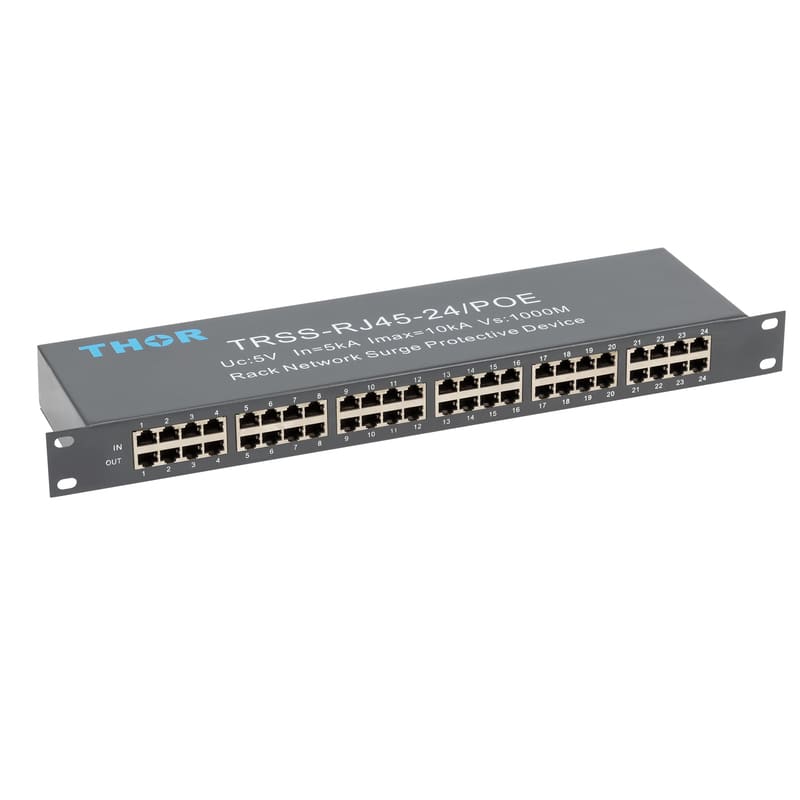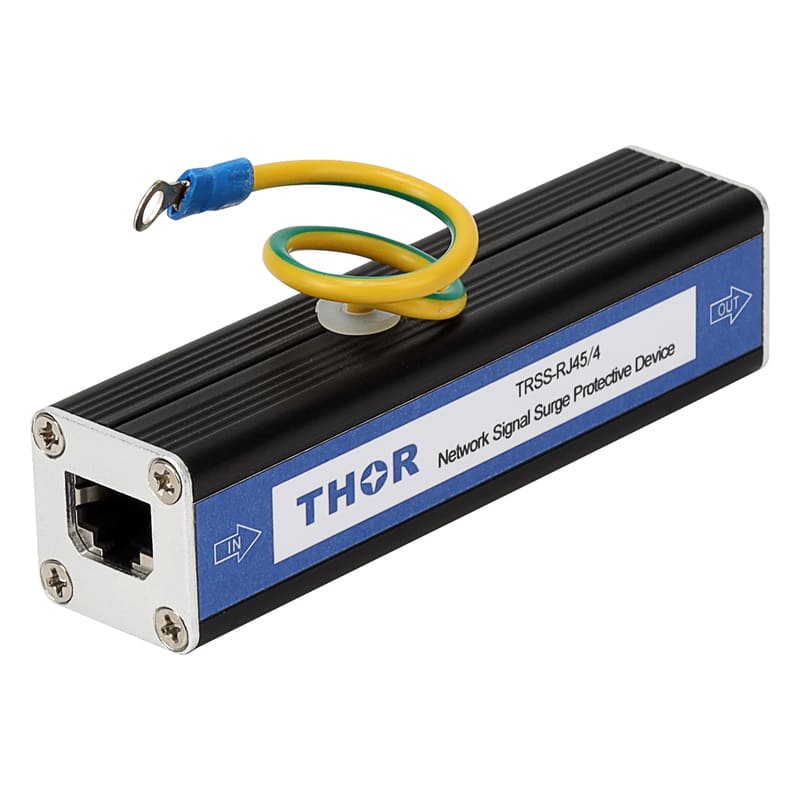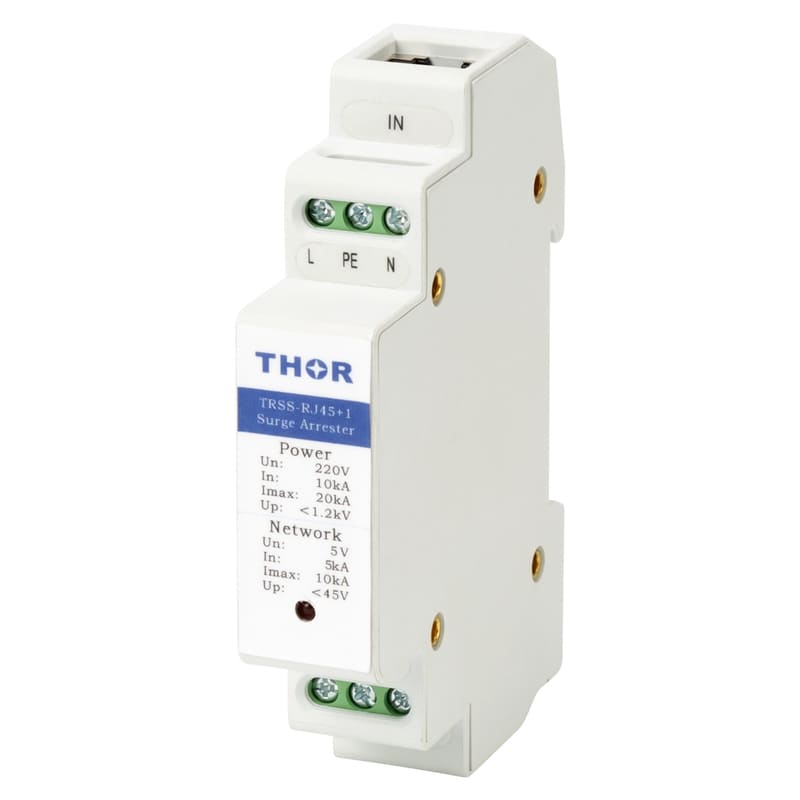What Is a Surge and What Is Surge Protection?
Electrical surges are sudden and temporary spikes in voltage that can severely impact electrical systems and connected devices. These voltage fluctuations often stem from external sources such as lightning strikes, power grid malfunctions, or internal causes like high-powered appliances cycling on and off. While these surges last only milliseconds, their effects can be devastating, leading to equipment failure, data corruption, and even fire hazards.
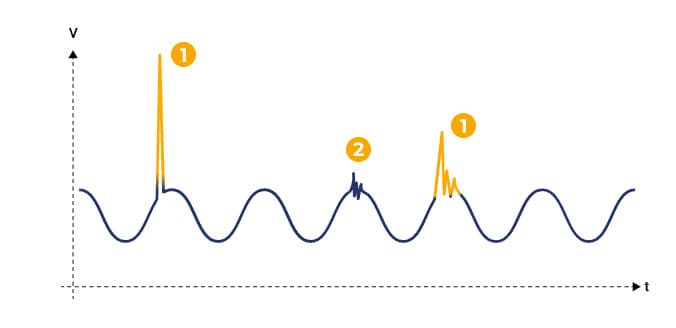
Figure 1 - Transient overvoltages in electrical circuits
Surge protection devices (SPDs) are engineered to mitigate these risks by controlling excess voltage before it reaches sensitive electrical components. These devices act as barriers, diverting or absorbing harmful surges to maintain safe voltage levels within electrical circuits. By integrating SPDs into electrical systems, homes and businesses can safeguard their valuable electronics, extending their lifespan and maintaining uninterrupted operation. Without surge protection, even small and frequent voltage spikes can cause gradual degradation of electronic components, leading to unpredictable failures over time.
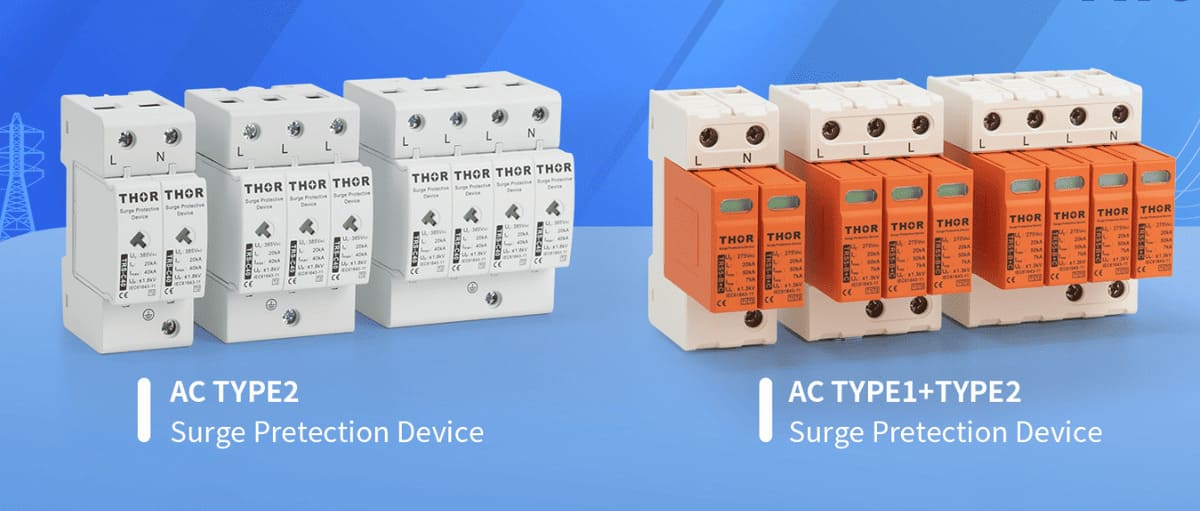
Figure 2 - T1 and T1+T2 Surge protective devices
The effects of electrical surges vary based on the severity and frequency of the event. A major surge caused by a lightning strike can immediately destroy unprotected devices, while smaller, repeated surges can cause gradual wear and tear, shortening the lifespan of electrical equipment.
This slow deterioration, known as “electronic rust,” can lead to unexpected failures and costly replacements. Implementing surge protection is not just about preventing catastrophic damage but also about ensuring the longevity and reliability of electrical systems over time.
Additionally, power surges can result from improper wiring, faulty electrical infrastructure, or sudden changes in energy demand. Industrial sites and commercial buildings are particularly vulnerable, as they often have large motors and heavy machinery that can create internal surges.
How SPDs Protect Your Electric Circuits
Surge protection devices operate by detecting voltage spikes and responding in real time to prevent damage. The core function of an SPD is to divert excessive energy away from electrical circuits, channeling it safely into the ground or dissipating it through internal components.
Surge protective devices offer excellent compatibility, allowing for integration in both parallel and series circuit configurations.
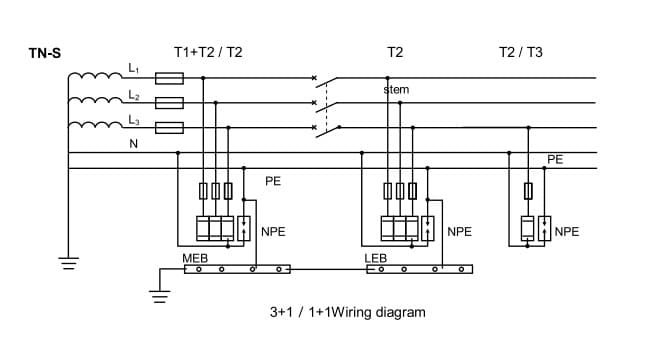
Figure 3 - Normal AC SPDs wired to TN-S 3+1 earthing systems
Key components of SPDs include:
Metal Oxide Varistors (MOVs): These semiconductors act as voltage-sensitive gates, absorbing excess energy and clamping it to a safe level. When the voltage exceeds a predefined threshold, the MOV rapidly changes its resistance to conduct excess energy away from connected devices. MOVs are widely used due to their fast response time and efficiency in handling transient surges.

Figure 4 - High-quality metal oxide varistor chips for THOR surge protection devices
Gas Discharge Tubes (GDTs): GDTs provide a pathway for excessive voltage to be safely discharged, particularly effective in high-energy surges. They act as a robust solution for handling large transient surges without deteriorating as quickly as MOVs. GDTs are often used in combination with MOVs to enhance overall surge protection capabilities.
The response time of an SPD is critical, typically measured in nanoseconds or milliseconds. A well-designed SPD reacts instantaneously to voltage spikes, limiting exposure to hazardous energy before it causes irreversible damage. This rapid response is what makes SPDs indispensable in any electrical infrastructure. Without an effective SPD, electrical components would have to endure repeated exposure to transient voltages, leading to premature failure and costly replacements.
SPDs function by continuously monitoring the voltage level in a circuit. When a surge is detected, the SPD automatically engages and diverts the excess energy away from sensitive electronics. After the voltage stabilizes, the SPD resets and returns to its standby state, ready for the next potential surge.
Beyond reactive protection, modern SPDs incorporate diagnostic and monitoring features that allow users to track electrical activity and identify surge events. Some advanced models include LED indicators, remote alarms, and data logging capabilities to enhance system monitoring and maintenance.
Types of Surge Protective Devices
Surge protective devices and fire extinguisher are classified and tested according to specific national and international standards to ensure their reliability, effectiveness, and safety in protecting both people and property.
SPDs are typically classified based on their ability to withstand surges and their location within the electrical system, such as Type 1, Type 2, and Type 3 devices, each serving a different protective role.
Fire extinguishers, on the other hand, are classified by the type of fire they are designed to combat—such as Class A (ordinary combustibles), Class B (flammable liquids), and Class C (electrical fires)—with specific performance criteria outlined by organizations of the National Fire Protection Association (NFPA) and Underwriters Laboratories (UL).
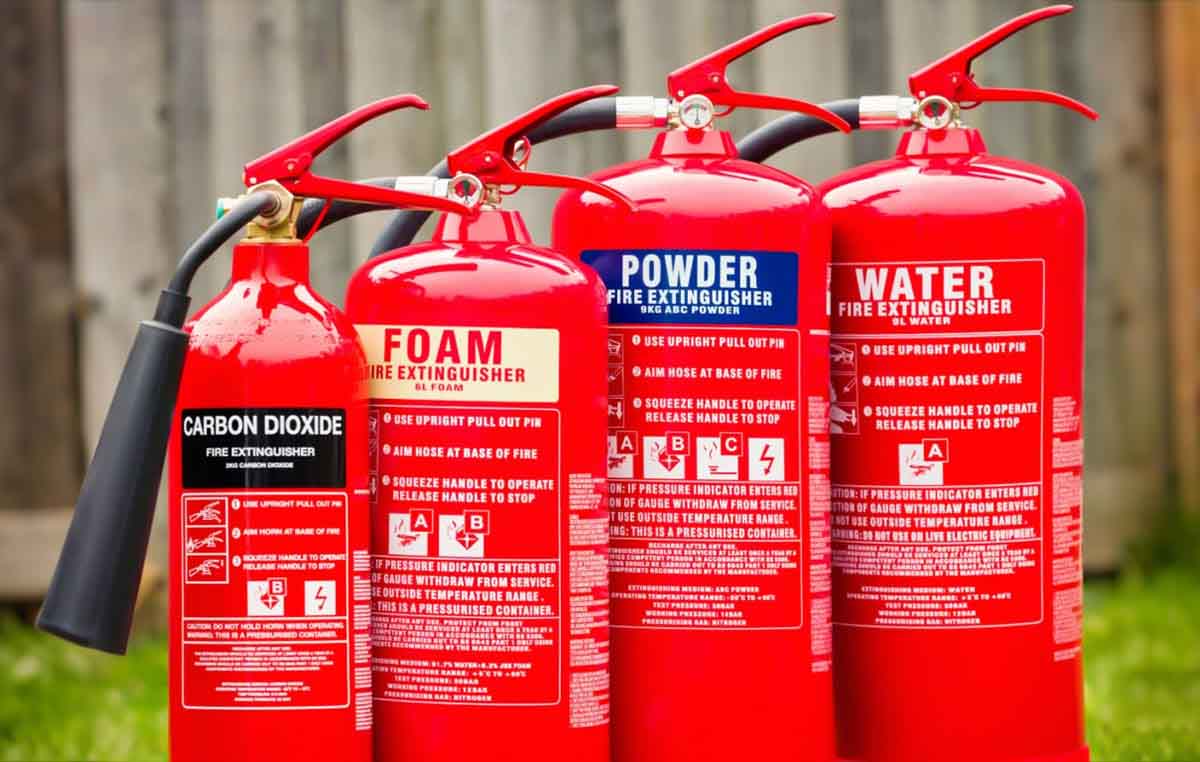
Figure 5 - Various Fire Extinguisher Types
Surge protection comes in multiple layers, addressing different points of vulnerability within an electrical system. Understanding the various SPD types helps in implementing a comprehensive defense against surges.
Type 1 SPDs (Primary Protection): Installed at the main electrical panel, Type 1 devices are designed to handle large surges originating from external sources, such as lightning strikes or utility power grid disturbances. These are the first line of defense, preventing massive energy influxes from reaching downstream circuits. Type 1 SPDs are commonly used in industrial facilities and commercial buildings, where high-energy surges are more likely. In residential settings, Type 1 SPDs are installed where the utility service enters the building, offering whole-house protection from external surges.
Thor type 1 AC surge protective device
Type 2 SPDs (Secondary Protection): Installed at subpanels, Type 2 devices address residual surges that may bypass primary protection or originate within the building. These SPDs safeguard branch circuits and are effective in preventing damage caused by fluctuations from high-powered appliances like HVAC systems. Homes and offices benefit significantly from Type 2 SPDs, as they protect against the more frequent, lower-energy surges that can still degrade sensitive electronics over time.
Thor type 2 AC surge protective device
Type 3 SPDs (Point-of-Use Protection): These are localized protection solutions such as power strips, wall outlets, and plug-in surge protectors. Designed to protect individual devices like computers, televisions, and gaming consoles, Type 3 SPDs provide an added layer of security, particularly in areas with sensitive electronics. While they offer convenient protection, they should not be relied upon as the sole line of defense but rather as a supplementary measure to Type 1 and Type 2 SPDs.
Combination SPDs: Some surge protection solutions integrate multiple types into a single device, offering a layered approach to protection. These hybrid SPDs enhance overall system resilience by addressing surges at various levels within an electrical network. A well-designed surge protection strategy often incorporates all three SPD types to create a robust defense against transient voltage events.
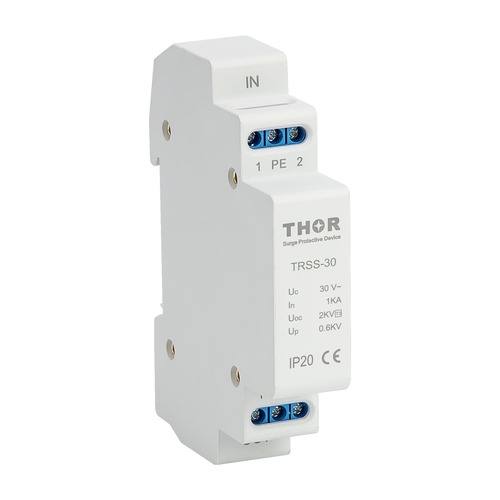
Thor type 3 AC surge protective device
Essential SPD Parameters
When selecting an SPD, it is important to consider key performance parameters to ensure adequate protection. These parameters define the SPD’s ability to handle surges and maintain electrical system integrity.
Nominal Discharge Current (In): represents the SPD’s ability to handle a specific level of surge current multiple times without degradation. It is typically rated in kiloamperes (kA) and is a critical factor in evaluating the device’s longevity.
Maximum Discharge Current (Imax): is the highest surge current an SPD can withstand in a single event without failing. A higher Imax rating indicates better protection against extreme surge conditions, such as lightning strikes.
Voltage Protection Level (Up): defines the maximum voltage an SPD allows to pass through before clamping the surge. A lower Up value means better protection, as it prevents excessive voltage from reaching connected devices.
Continuous Operating Voltage (Uc): is the maximum voltage the SPD can operate under normal conditions without triggering its protection mechanism. It ensures that the SPD does not activate during minor voltage fluctuations.
Response Time: Measured in nanoseconds, this parameter indicates how quickly the SPD reacts to a surge. Faster response times provide better protection against transient spikes.
Short-Circuit Current Rating (Isc): determines the SPD’s capacity to withstand short-circuit conditions and is essential for ensuring safe operation in high-energy environments.
A Lesson from Fire Extinguishers
The concept of surge protection can be effectively compared to fire extinguishers—both are proactive safety measures designed to mitigate potential disasters.
In November 2023, a fire broke out at the TechPro Manufacturing Facility in Easton, Ohio, caused by a faulty electrical panel. Despite warning signs, necessary repairs were delayed due to cost-saving measures. The fire, which started small, quickly escalated due to the lack of fire extinguishers and an inadequate fire suppression system. The workers, unable to control the flames, watched as the fire spread uncontrollably, causing over $3.5 million in damage and leading to a six-month shutdown that cost the company $15 million in lost revenue.
Upon investigation, it was revealed that the facility had no fire extinguishers, and fire drills were never conducted due to budget concerns. This oversight proved disastrous. A simple fire extinguisher, if accessible, could have contained the flames before they spread, saving both equipment and financial resources. The absence of basic firefighting tools turned a manageable situation into a catastrophic event.
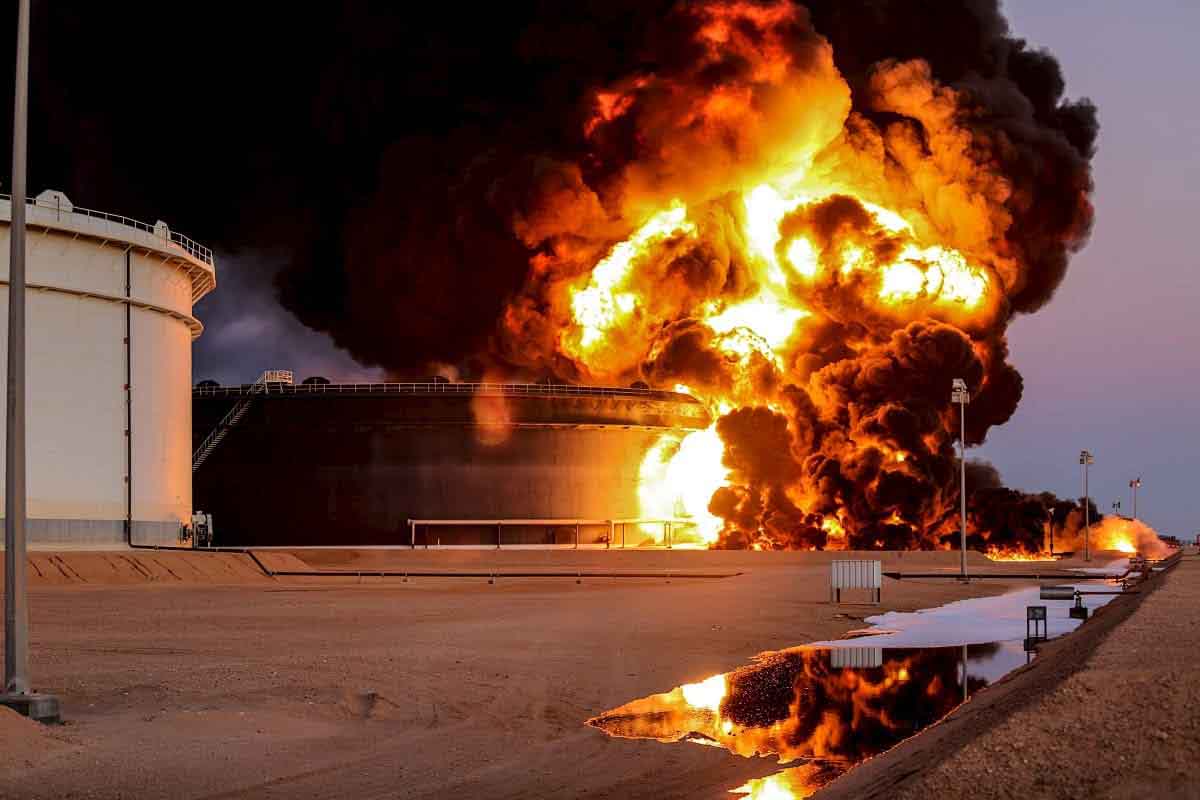
Figure 7 - Fire spreading to entire factory plants
This event starkly underscores the importance of preventive safety measures—not just fire safety equipment, but all forms of protective systems that prevent larger disasters. The facility’s fire extinguisher system could have stopped the fire in its tracks if it had been installed and easily accessible. Even a small fire extinguisher in the hands of a trained employee could have potentially saved millions of dollars and minimized the chaos.
Importance of protective equipment
Interestingly, the situation parallels another often-underestimated risk: surge protection for electrical systems. Much like how the factory saved money by neglecting fire safety equipment, many facilities forgo surge protection devices (SPDs) in an effort to cut initial costs. A surge, such as one caused by a lightning strike or power grid instability, can send high-voltage spikes into electrical equipment, damaging everything from circuit boards to power supplies, and rendering critical systems inoperable. Just like with the fire, the cost of neglecting surge protection is invisible until it’s too late.
Imagine if the factory had decided to save on surge protection for their equipment. When a surge hit, perhaps due to a nearby lightning storm, it could have destroyed their sensitive machinery and led to the same financial and operational chaos. The repairs would have been much more expensive than the cost of installing surge protection devices. The mental anxiety of wondering whether an electrical surge could take out the whole facility, especially in a region prone to thunderstorms, would only add to the emotional toll on the staff.
In both cases—fire safety and surge protection—the initial savings from neglecting protection measures pale in comparison to the long-term financial and emotional costs when disaster strikes. In the case of fire, an extinguisher could have saved millions of dollars and spared the team from a traumatic experience. In the case of surge protection, the cost of repairing or replacing damaged equipment and dealing with lengthy downtime would have been far higher than the cost of the preventive devices.
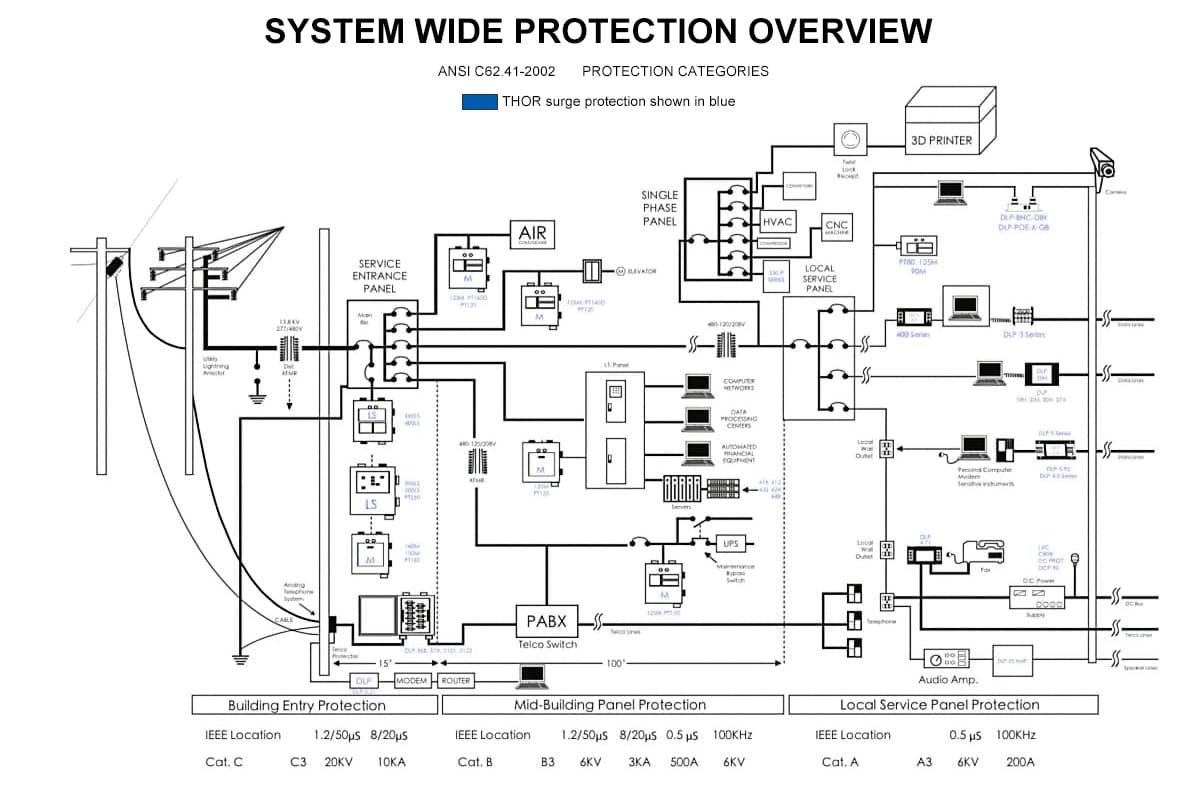
Figure 8 - Systematic surge protection wiring for electrical equipment within buildings
By investing in safety equipment, whether for fire suppression or surge protection, businesses protect not only their physical assets but also their employees' well-being. Preventive measures may seem like an unnecessary upfront cost, but the consequences of neglecting these systems—whether in terms of financial loss or emotional stress—are far more unbearable in the long run. The key takeaway from the TechPro Manufacturing Facility disaster is clear: cutting corners on safety may offer short-term relief, but the eventual price could be catastrophic.
Conclusion
Power surges are an unavoidable reality of modern electrical systems, and their impact can range from minor inconveniences to catastrophic failures. Implementing a layered approach to surge protection is a crucial step toward safety, maintaining equipment longevity, and preventing financial loss. Investing in a robust surge protection system is not just a choice—it is a necessity for anyone relying on electronic devices and electrical systems.


